Meet Mister Bruce Willis. Not the hard-edged badass one we used to see on the big screen, but this one is definitely a fighter, too. Mister Willis is a cat who started his story as “the saddest cat.” He looked as if the struggles of being a stray cat roaming the streets for years were written in his eyes. It took him years to finally find a loving owner—Sandra, who, ironically, also had to go through quite a few obstacles to bring him home, writes boredpanda.
6-year-old Mister Willis had significant health issues: scars, an eye injury, chipped teeth, tested positive for feline immunodeficiency virus, and eventually caught a few infections at the shelter. Despite his rough looks and unfortunate fate, he was “the sweetest and the most affectionate boy around,” but he couldn’t find a family who was willing to take care of him. Sandra saw a post from Animal Humane Society in Minnesota about Mister Willis on International Cat Day, and her heart dropped. Sandra had no intentions of getting a furry friend, especially when pets were not allowed according to her lease, but she couldn’t leave him and kept visiting him regularly at the shelter in hopes he’d find his human. After a month, she was able to convince the landlord that Mister Willis deserved a loving home. He was perfect because of his imperfections.
In just a year with Sandra, the orange tabby changed unrecognizably—he went from the “saddest” to the “happiest” cat, who is now warming hearts on Instagram with 94.4k followers.
Check out Mister Willis’ full story below!
Bruce Willis was wandering the streets for years until at around 6 years old, he was rescued by the local humane society
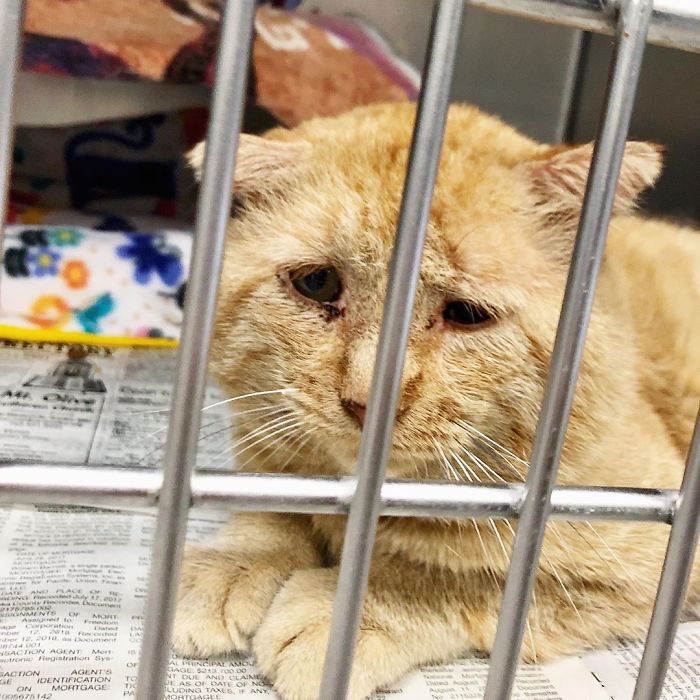
He had battle scars, an eye injury, chipped teeth, and was FIV positive, which led to catching a cold and upper respiratory infection at the shelter
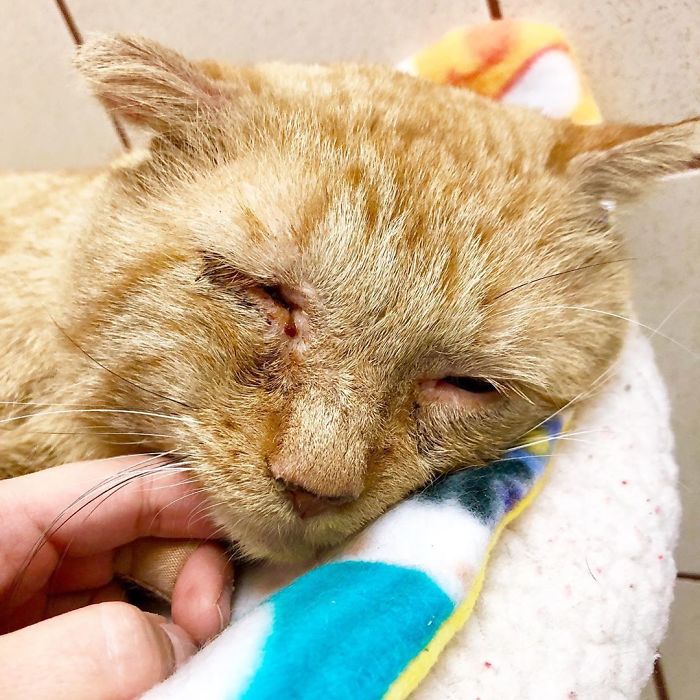
But the most heartbreaking thing about him was the saddest look in his eyes

The weeks passed by and he was still at the shelter, so they labeled him as a “forget me not”
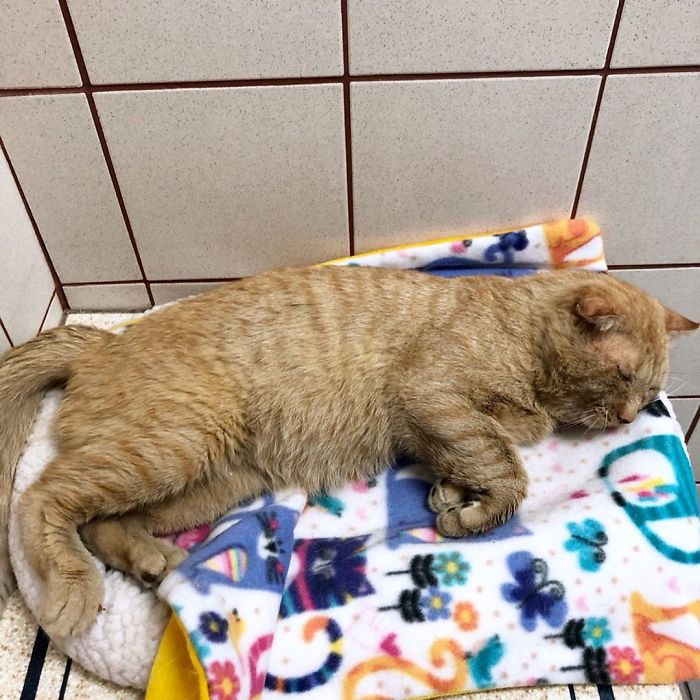
Until one day, Sandra, who had no intentions of getting a cat, saw him in an Instagram post and her heart sank
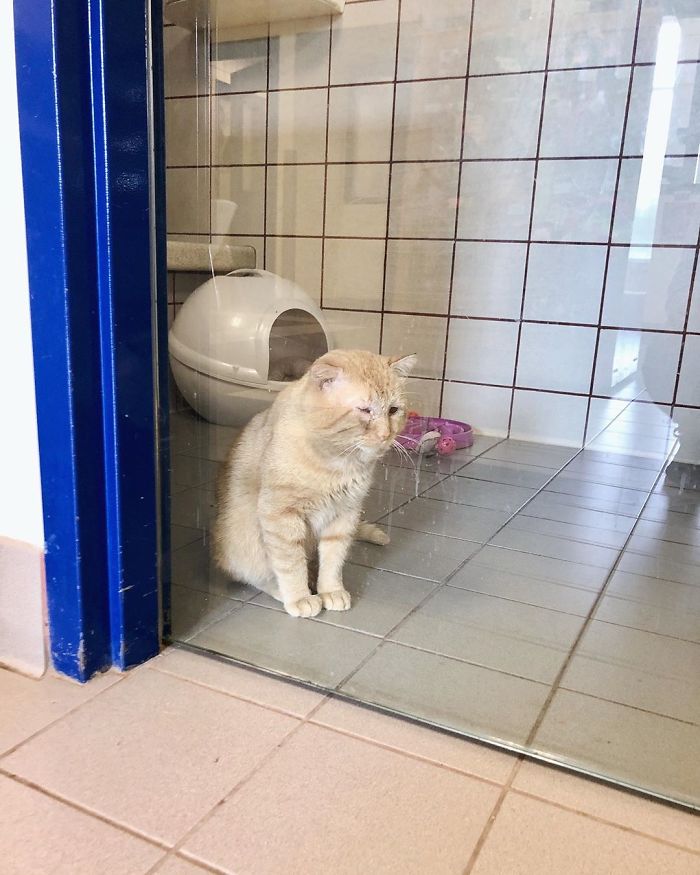
“I saw Mister Willis the first time in a post that the Animal Humane Society in Minnesota uploaded in August last year. There was something about his eyes that just spoke to me. He looked so sad. I knew I couldn’t do anything about it since my lease didn’t allow pets and I was also not planning on getting a cat. Even so, I had to go and visit him. He looked even sadder in real life and I had to leave after only a couple of minutes because it was so heartbreaking. For some reason, I kept going back to visit him. He is FIV positive, which isn’t a big deal, but since he was at an animal shelter with lots of other pets, he got an upper respiratory infection. He was really sick for a while. I hoped that someone would adopt him, but he was still there, week after week,” Sandra told Bored Panda.

She convinced her landlord with a “no pets” rule that Mister Willis was worth making an exception, and their lives changed forever
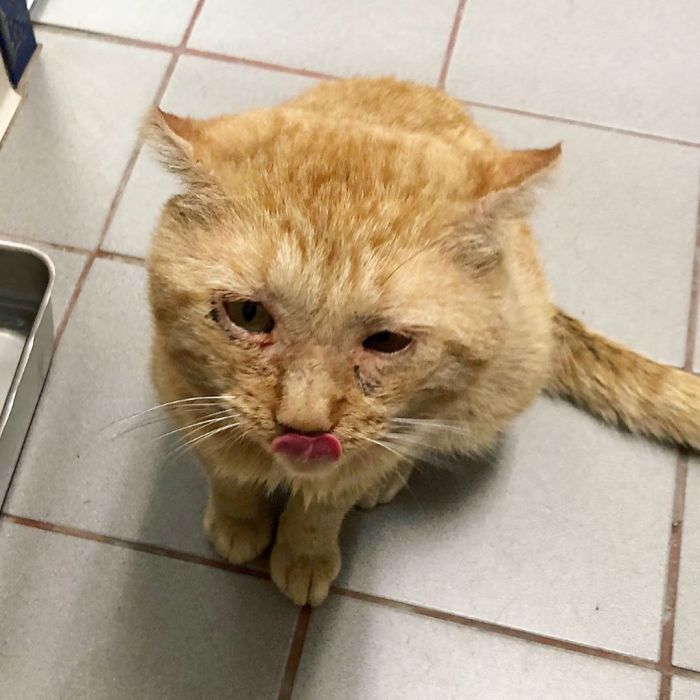
“Eventually, I decided to ask my landlord for permission to get him, and I was really surprised when I was granted an exception. I brought him home the following day. He went from being the saddest cat to the happiest cat I’ve seen in only a couple of hours. He purred all night long and wouldn’t leave my side.”
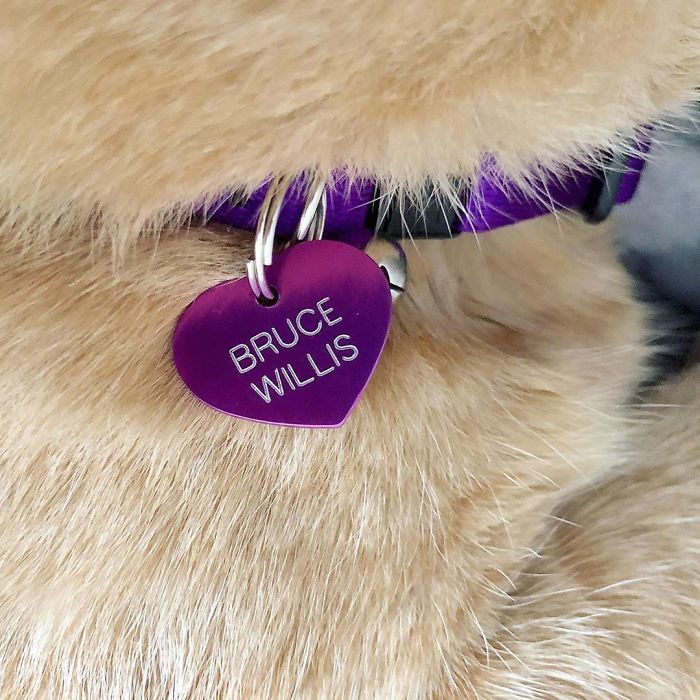
The first night at home, he wouldn’t stop purring

“Mister Willis is FIV positive. It stands for feline immunodeficiency virus and it’s not as scary as it sounds. It basically means that he has a weaker immune system than ‘normal’ cats. When I first got him, he had a cold, ear infection, and eye infection that he got at the shelter. It was a little harder for him to fight it off because he’s FIV+ but he eventually did, and right now, I can’t notice his disease at all. I’m just making sure I’m doing what I can to keep him happy and healthy.”
It’s been a year since Mister Willis found his furrever home, and he’s transformed unrecognizably
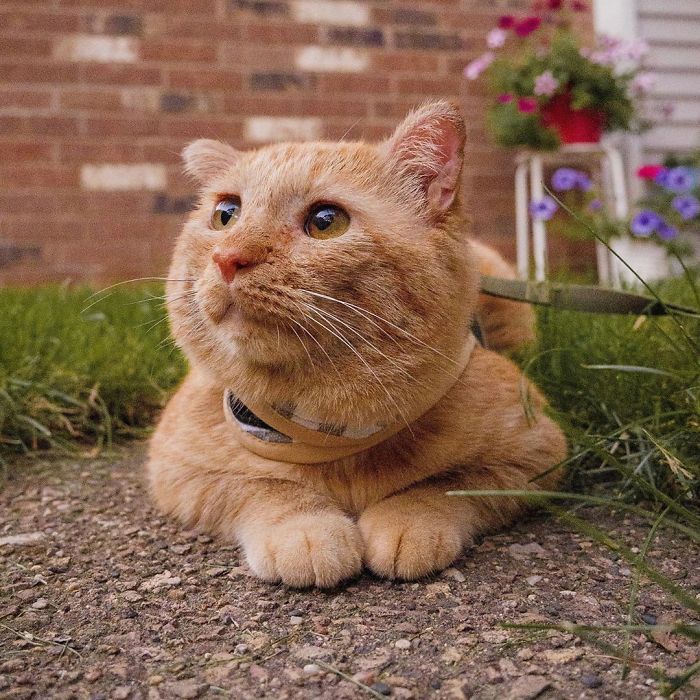
This story originally appeared on boredpanda.com
6 Most Common Cat Health Problems
Cats are good at self-maintenance. But even your fastidious feline can't prevent some of these more common cat diseases and health issues.
1. Vomiting
Vomiting is a very common problem with cats with a multitude of causes. They range from eating something poisonous or inedible (like string), to infection, urinary tract disease, or diabetes to hairballs.
Symptoms are usually obvious, and include drooling and abdominal heaving. Vomiting can quickly leave your cat dehydrated, so if kitty continues vomiting or acts ill, call your vet right away. It may help to collect a sample of your cat's vomit and take it with you to the vet.
2. Feline Lower Urinary Tract Diseases (FLUTD)
Some estimates say as many as 3% of cats seen by vets have feline lower urinary tract disease ( FLUTD), which is actually a group of feline diseases with multiple causes.
Female and male cats can get FLUTD, and it often occurs in cats that are overweight or unfit or who eat dry food. Stress, a multi-cat household, and sudden changes can all raise a cat's risk of FLUTD, and treatment depends on the type of FLUTD your cat has.
FLUTD symptoms include:
- Straining to urinate
- Bloody urine
- Urinating in unusual places
- Crying when urinating
- Licking around the urinary area (often because of pain)
- Depression
- Dehydration
- Lack of appetite
- Vomiting
It's always an emergency if your cat can't urinate. Call your vet immediately if you suspect your cat has a urinary tract problem.
3. Fleas
Fleas are a very common external feline health problem. But it's one you can easily treat. Signs your cat has fleas include:
- Flea dirt on its skin (they look like tiny black dots)
- Constant scratching
- Frequent licking
- Red or irritated skin
- Hair loss
- Skin infections or hot spots
Fleas can live for more than a year, and your cat risks anemia if the problem becomes serious, so be sure to treat your cat's flea problem and prevent future infestations.
Talk to your vet about which flea control would be best for your cat. Treatments include oral medication, powders, foams, and topical medication. Fleas are uncommon in Utah. If you adopt a pet from a region outside of Utah or are housing a pet that recently came from another state, please be aware of fleas.
4. Tapeworms
One of the most common feline health problems inside your cat, tapeworms live in kitty's small intestine and sometimes grow as long as 2 feet.
Symptoms of a tapeworm infection can be subtle but may include vomiting and weight loss. The easiest way to tell if your cat has tapeworms is to look at its feces and around its anus. If you see small white worms or what look like grains of rice or sesame seeds, your cat likely has tapeworms.
Treatment options include injection, oral, or topical medication. But because cats almost always get tapeworms as a result of swallowing a flea, be sure to handle any flea problems your cat has before tackling tapeworms.
5. Diarrhea
Many things can cause diarrhea in cats, including spoiled food, allergies, infection, liver disease, cancer, and more.
Symptoms of diarrhea are loose, watery, or liquid stool. Depending on its cause, diarrhea can last for a day, a week, or months.
If your cat has diarrhea, offer kitty plenty of fresh, clean water to prevent dehydration. Then remove kitty's food for no more than 12 to 24 hours. Take your cat to the vet if he or she still has diarrhea after a day or immediately if you notice vomiting, dark, or bloody stools, fever, lethargy, or loss of appetite or if your cat is straining to defecate.
6. Eye Problems
Eye problems in cats can be caused by a number of things, including conjunctivitis, cataracts, glaucoma, trauma, viruses, inflammation, and retinal disease.
A few symptoms that may mean your cat has eye problems include watery eyes, tear-stained fur, cloudiness, red or white eyelid linings, gunk in the corners of the eye, squinting, pawing at the eye, or a visible third eyelid.
Unless you know what's causing your cat's eye problems, there isn't much you can do other than wipe away any gunk with a damp cotton ball. After that, call your vet.

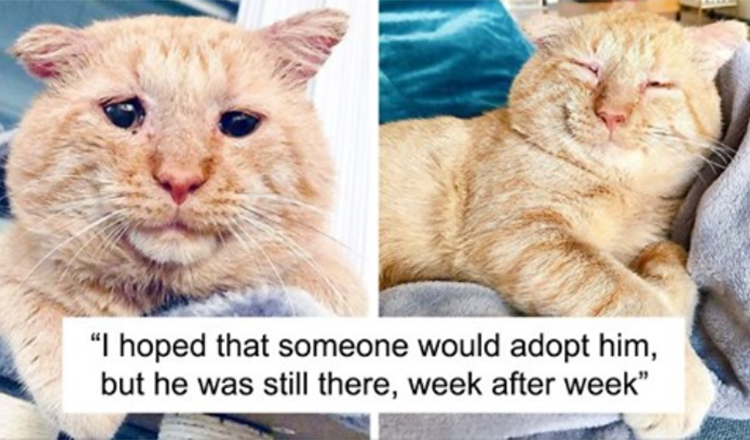


GIPHY App Key not set. Please check settings